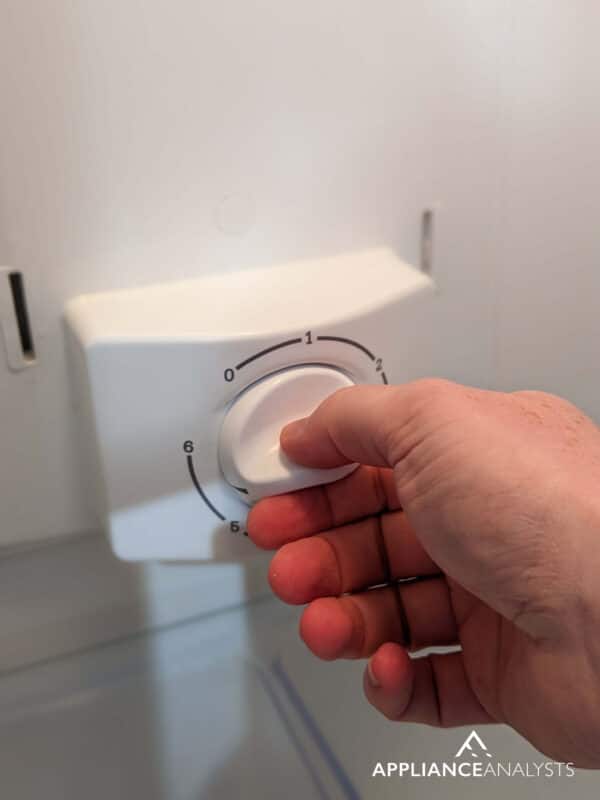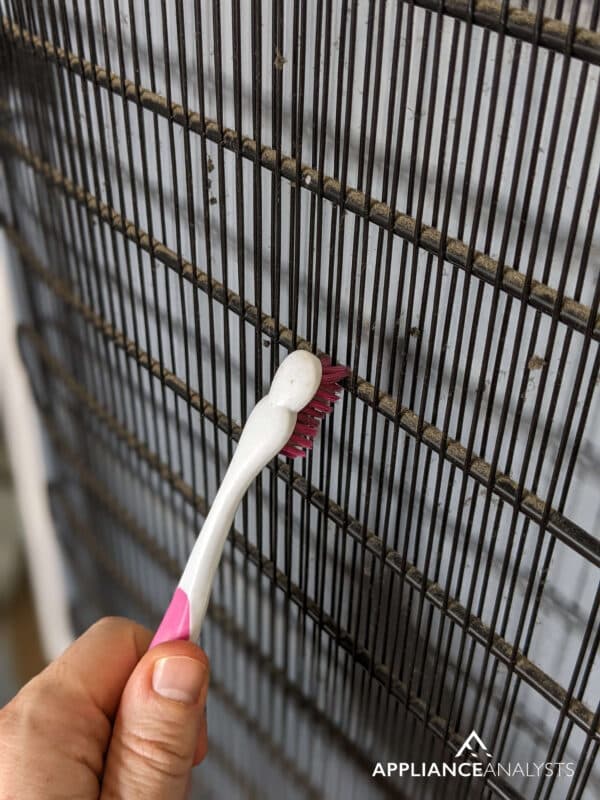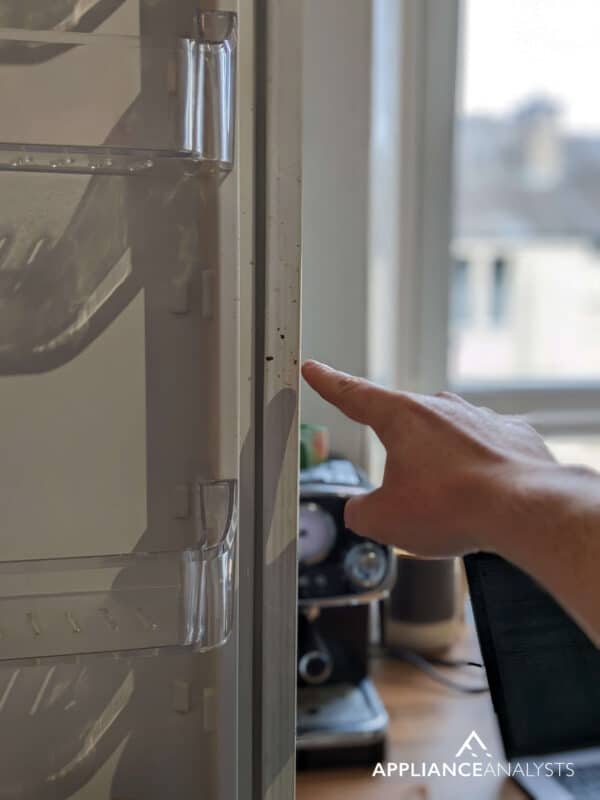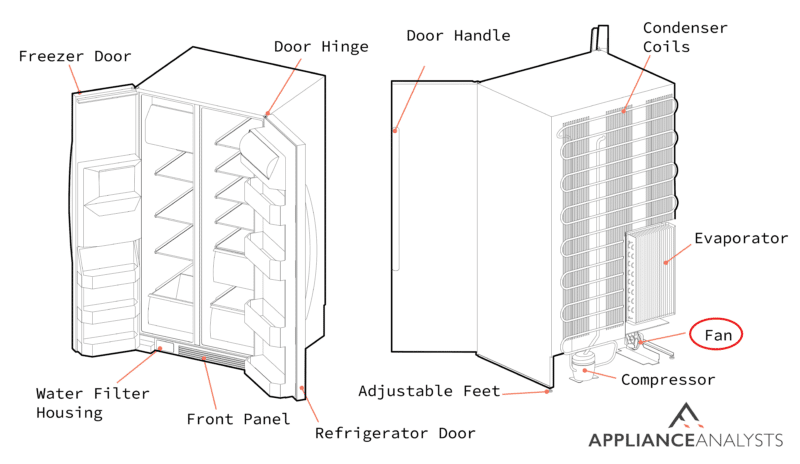We've independently reviewed this article to make sure it's as accurate as we can make it.
To find out more about our article creation and review process, check out our editorial guidelines.
Is your refrigerator running too much?
I know how annoying it can be to deal with the constant humming of a fridge, especially because it can significantly raise your electricity bills.
Luckily, you’ve come to the right place to fix the issue.
If your refrigerator is constantly running, chances are the condenser coils are dirty, your freezer’s temperature is too high, or the defrost heater and thermostat are faulty. A damaged door gasket or condenser fan motor could also explain the issue.
Keep reading to keep your fridge from running too often!
Why trust us? This article was written by Craig Anderson and Andy Fulenchek.
Craig has helped thousands of other homeowners repair their appliances since 2016.
Andy is one of our resident appliance repair experts with over a decade of experience. He currently runs his appliance repair company with a team of trusted technicians.
How Often Should a Fridge Start and Stop?
There isn’t an average time for a refrigerator to start and stop. The running time can vary based on its model, age, environment, and specific operational needs.
In my experience, it isn’t alarming if a fridge’s compressor runs 70-80% of the time indoors. However, if you notice that it’s running more often, chances are there’s an underlying issue.
Keep in mind that older refrigerators tend to run more often because they typically go into defrost mode two or three times a day for approximately 20 minutes. They can also run more often because their compressor is less efficient.
If you notice that your fridge is running longer than normal, please keep reading.
Why Is Your Refrigerator Running Too Often? 6 Explanations
In this section, I’ll guide you through the different reasons that can explain why your refrigerator cycles too often and provide various solutions.
Remember that refrigerators are designed to run frequently to maintain the desired temperature. It’s normal for your fridge to cycle on and off throughout the day. The evaporator fan can also run continuously independently of the compressor. However, if your fridge runs excessively, it could signal an underlying issue, and you’ll need to try the fixes below.
#1 High Temperature
I tend to find that when a refrigerator cycles too often, it’s typically because it’s not set to the right temperature.
Most refrigerators should sit between 3 °C (37.4 °F) and 5 °C (41 °F). So, please check your fridge’s temperature by placing a glass of water on the middle shelf and leaving it there for 8–12 hours (keep the door closed). Then, place a thermostat in the glass of water and check the temperature.
If your fridge is too warm, adjust the temperature dial.
Note: Keep in mind that the settings on the dial inside your fridge represent the power of the refrigerant being used. So, the higher the number, the colder your fridge will get. If your dial reads 1 to 5, it means that 5 will be the coldest and 1 will be the warmest.

It’s also crucial to consider ambient temperature. If your fridge is in the garage or next to heat sources like an oven, consider moving it. High temperatures can make your fridge work harder and run more often than normal.
#2 Dirty Condenser Coils
When I see a refrigerator running too much, I always check the condenser coils.
You see, during refrigeration, a coolant flows through the fridge condenser coils to draw heat away from the unit.
If the condenser coils are dirty, your refrigerator will have to work overtime to keep cool, making it run longer than it should.
Luckily, you can solve the issue by simply cleaning the condenser coils. Here’s how to do it:
- Unplug the refrigerator from the wall outlet to prevent electrical hazards.
- Move the refrigerator from its place to access the condenser coils. They are usually located at the back or across the bottom of the unit.
- Use a vacuum or a brush to clean the coils of dust and dirt.
- Sweep and then mop the floor under the refrigerator. Wait for the floor to dry.
- Put the refrigerator back in place and plug it back in.

#3 Damaged Door Gaskets
Now, it’s time to check your fridge’s gaskets.
Door gaskets are the seals that run around the refrigerator that prevent cold air from escaping and warm air from entering the unit.
If your refrigerator is letting warm air in, it will have to work harder and run more often to keep the environment cool. So, please inspect the gaskets.
How can you tell if your door gaskets are damaged? The following are signs of wear and tear:
- Torn gaskets
- Brittle or cracked gaskets
- Moisture on freezer shelves
- Moisture on the edge of the door
- Moisture around the air outlet ducts

Do you think that your refrigerator gaskets could use replacing? Then here’s how to do it:
- Start by soaking your new gasket in warm water.
- Loosen, but do not remove the screws that hold the old gasket to the edge of the door.
- Pry the old gasket away from the door.
- If you soaked the new gasket in warm water, dry it off.
- Pull the gasket lip behind the metal retainer, starting with one of the top corners. Continue working your way around the fridge, pulling the gasket around the container.
- Tighten the screws that fasten the gasket to the edge of the door.
#4 A Faulty Defrost Heater
If you’re still struggling with a refrigerator that is running too often, you’ll need to check the defrost heater.
Your defrost heater is located next to the evaporator coils and operates a couple of times a day to thaw the build-up frost in the area. Unfortunately, if it’s not working properly, frost will accumulate on the evaporator coils.
If your evaporator coils are frosted over, it will be difficult for the refrigerator to remove heat from the unit. As a result, it will have to run more often to cool itself down.
To determine if your defrost heater is faulty, you will need to test it with a multimeter. Here’s how:
- Unplug the refrigerator from the power source.
- Remove the defrost heater. (To do so, you will likely have to remove the shelves, drawers, and other parts that are in the way.) Please read your manual for further instructions.
- Set your multimeter to Rx1 mode.
- Place the probes on the defrost heater’s terminals and test for continuity.
- You should see a reading between zero and infinity. Any other reading will show that your defrost heater needs replacing.
#5 A Faulty Defrost Termination Thermostat
In my experience, a refrigerator cycles off and on when it starts a defrost cycle. So, if there’s an issue with the defrost thermostat, your fridge will run longer than normal.
The defrost thermostat detects the temperature on the coils and turns the defrost heater on when they’re too cold and off when they have finished defrosting.
If the defrost thermostat is not working correctly, then it will not detect the temperature of the coils accurately, whichcould cause the defrost heater to stay on although the coils have finished defrosting.
Is your refrigerator defrosting too often? Do you think the defrost thermostat is faulty? Conduct a multimeter test for continuity. If it does not show continuity, replace the thermostat.
#6 A Faulty Condenser Fan
When fixing a refrigerator that cycles too often, checking the condenser fan is crucial.
The condenser fan works together with the coils to keep your refrigerator at the right temperature. When the coils build a layer of frost, the condenser fan motor pushes air over them to defrost them.
If the fan doesn’t operate properly, the compressor must work harder to keep the fridge cool. As a result, your fridge will keep running non-stop.
If you suspect that the condenser fan is blocked, please follow these simple instructions:
- Unplug the refrigerator and locate the condenser fan motor (please check the user’s manual)
- Remove any debris that could be blocking the fan.
- Vacuum and clean that area frequently to stop debris from building up in the fan.
What can you do if you suspect your condenser fan motor is faulty?
- Check for wear and tear on the motor and blades.
- Test that the electricity is flowing correctly to the fan.
- Check if the motor has continuity. If not, please replace it.

Ensuring Your Refrigerator Runs Right
Hopefully, now you know how to fix your fridge’s issues.
Remember that if your refrigerator cycles too often, you must check the internal and ambient temperature, clean the condenser coils, or replace the door gasket. Don’t forget to inspect the condenser fan and the defrost heater.
Thank you so much for reading! Please check out our other related guides if you found this article helpful.
Have a great day.
-Craig








